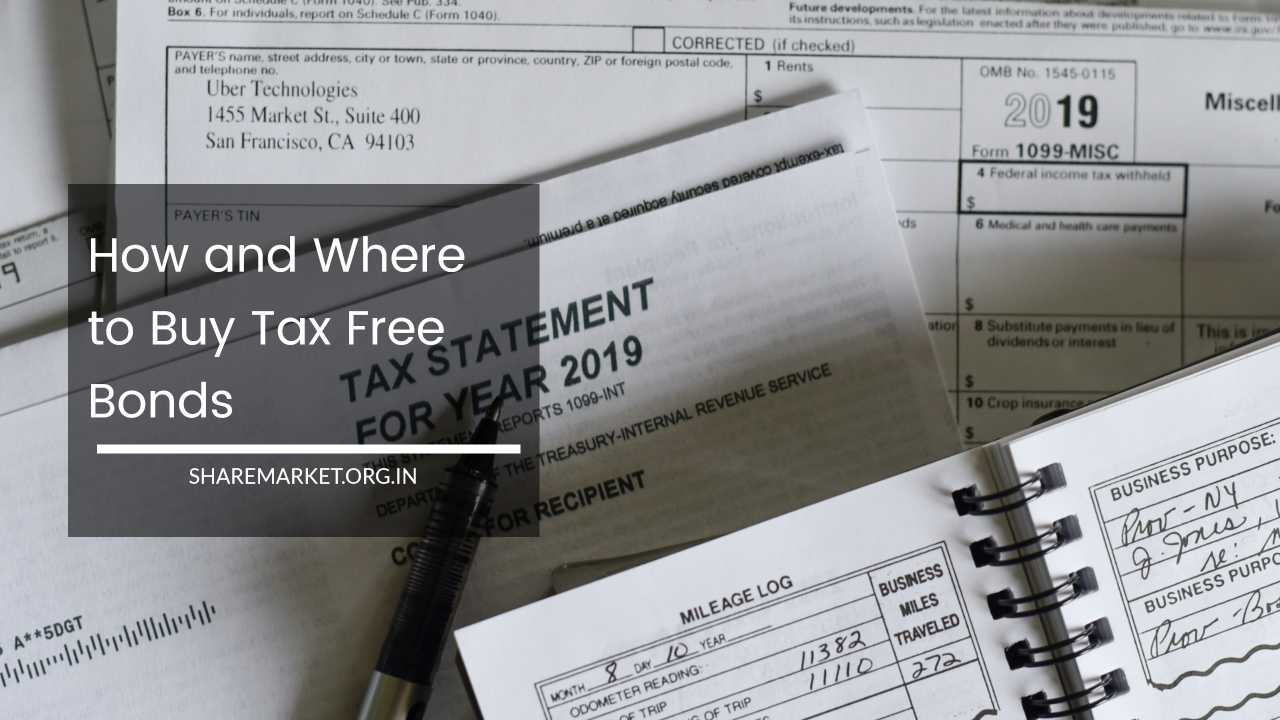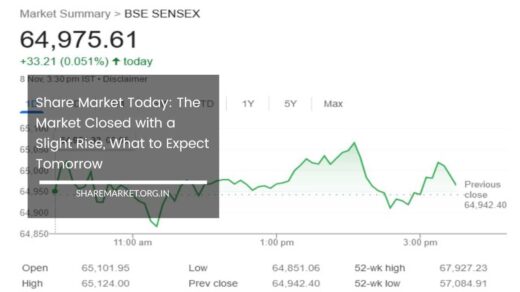How and Where to Buy Tax Free Bonds

Tax Free Bonds
How and Where to Buy Tax-Free Bonds in India
Tax-Free Bonds have become an increasingly popular investment choice in India, particularly for those seeking to maximize their post-tax returns.
These bonds provide a steady income stream while offering the advantage of tax-free interest, making them an attractive option for investors across various tax brackets.
However, navigating the intricacies of tax-free bonds can be complex. This comprehensive guide aims to demystify the process, covering everything from the types of tax-free bonds available to the detailed steps for purchasing them.
Whether you’re new to investing or an experienced investor, this guide will help you make informed decisions about tax-free bonds.
Understanding Tax-Free Bonds
Tax-Free Bonds are debt instruments issued by state governments or government-owned entities. They are designed to provide investors with a reliable income stream while offering the advantage of complete tax exemption on the interest earned.
This makes them particularly appealing to investors looking to reduce their tax liability while ensuring a steady flow of income.
Definition and Purpose
Tax-Free Bonds are essentially long-term securities where the interest income is exempt from income tax under Section 10(15) of the Income Tax Act.
These bonds are typically issued for a fixed tenure and offer a predetermined interest rate. The primary purpose of issuing these bonds is to finance various public projects and infrastructure development, thereby supporting economic growth and development.
Issuer Types
- Central Government Entities: Bonds issued by central government institutions such as the National Bank for Agriculture and Rural Development (NABARD), Indian Railway Finance Corporation (IRFC), and Housing and Urban Development Corporation (HUDCO) fall into this category. These entities are responsible for funding specific projects that contribute to national development.
- State Governments: State governments also issue tax-free bonds to raise funds for state-specific infrastructure projects. These bonds are backed by the state’s fiscal resources and are generally considered low-risk investments.
- Government-Owned Corporations: Various government-owned corporations issue tax-free bonds to fund specific sectors, such as rural development or infrastructure. These bonds benefit from the financial backing of these large and stable organizations.
Types of Tax-Free Bonds
Tax-Free Bonds can be categorized based on their issuer and intended purpose. Here are the primary types:
- State Development Loans (SDLs)
SDLs are bonds issued by state governments to finance state-level development projects. These projects may include infrastructure development, healthcare, education, and other public welfare initiatives. SDLs usually offer a fixed interest rate and are considered safe investments due to the backing of state governments.
Key Features:
- Fixed Interest Rate: SDLs typically offer a fixed rate of interest, which remains constant throughout the bond’s tenure.
- Government Backing: Being issued by state governments, SDLs are generally low-risk investments.
- Purpose: Funds raised are used for state-specific development projects, contributing to regional growth.
- Rural Development Bonds
These bonds are issued specifically to support rural development projects, such as improving infrastructure, healthcare, and education in rural areas. They may be issued by state governments or government-owned corporations tasked with rural development.
Key Features:
- Focus on Rural Development: Funds are directed towards projects that benefit rural communities.
- Issuer Variability: Can be issued by either state governments or specialized government-owned entities.
- Community Impact: Aims to bridge the development gap between urban and rural areas.
- Infrastructure Bonds
Issued by government-owned corporations or central government entities, infrastructure bonds are designed to finance large-scale infrastructure projects such as highways, airports, and energy facilities. These bonds are critical for supporting national development and improving public infrastructure.
Key Features:
- Large-scale Projects: Funds are used for significant infrastructure developments.
- Government Support: Backed by government entities or corporations with substantial financial resources.
- Long Tenure: Often have longer maturities due to the scale and complexity of the projects they finance.
Eligibility Criteria
Tax-Free Bonds are generally available to all resident Indian individuals. However, there are specific eligibility criteria that can vary depending on the issuer and the type of bond. Understanding these criteria is crucial to ensure you meet all requirements before making an investment.
General Eligibility Requirements
- Residency: The investor must be a resident Indian, as defined by the Income Tax Act. Non-resident Indians (NRIs) are typically not eligible to invest in these bonds.
- Minimum Investment Amount: Some tax-free bonds have a minimum investment limit, which can vary based on the issuing entity. For instance, certain bonds may require a minimum investment of ₹1,000, while others may have higher thresholds.
- Income Restrictions: While most tax-free bonds are available to all individual investors, some issues may have income-based eligibility criteria. Investors should check the specific terms of the bond to determine if there are any such restrictions.
- Age and Legal Status: Investors must be of legal age (18 years and above) and must possess a valid PAN card. Legal entities like companies or trusts may also be eligible to invest in tax-free bonds, depending on the bond issue.
Verification and Documentation
To invest in tax-free bonds, investors need to provide certain documents for verification, including:
- PAN Card: Proof of identity and tax identification.
- Address Proof: Such as a utility bill, passport, or Aadhar card.
- Bank Account Details: For transactions and interest payments.
- KYC Compliance: Completion of the Know Your Customer (KYC) process, which involves submitting personal details and documentation to the financial institution or broker.
Benefits of Tax-Free Bonds
Tax-Free Bonds offer a range of benefits that make them an attractive investment option. Here’s an in-depth look at these advantages:
- Tax Exemption
The most significant benefit of tax-free bonds is the exemption of interest income from income tax. This feature allows investors to receive the full interest payment without having to pay tax on it, which can substantially enhance overall returns.
Impact on Tax Liability: For individuals in higher tax brackets, this tax exemption can result in considerable savings. For example, an investor earning ₹10,000 in interest from tax-free bonds will receive the entire amount without tax deductions, whereas the same amount earned from taxable investments would be subject to tax.
- Regular Income
Tax-Free Bonds provide a predictable and regular income stream, which can be especially beneficial for retirees or individuals seeking stable cash flows. The interest payments are typically made annually or semi-annually, depending on the bond’s terms.
Planning for Retirement: Investors looking to supplement their retirement income can benefit from the steady cash flows offered by these bonds. The regular payments can help cover living expenses and provide financial security.
- Safety and Security
Tax-Free Bonds are considered low-risk investments due to their backing by government entities. The financial stability of the issuing authority ensures that the bonds are a safe investment option.
Credit Quality: Bonds issued by central government entities or large government-owned corporations generally have high credit ratings, indicating strong financial health and low default risk.
- Liquidity
Although not as liquid as stocks or mutual funds, tax-free bonds can be traded on secondary markets. This provides a degree of flexibility for investors who may need to sell their bonds before maturity.
Market Trading: Investors can buy and sell tax-free bonds on stock exchanges or through brokers. The liquidity of these bonds can vary based on market conditions and demand.
- Capital Preservation
Tax-Free Bonds are generally issued with a fixed maturity date, ensuring that the principal amount is returned to the investor at the end of the bond’s term. This feature helps in preserving the initial capital invested.
Investment Stability: The fixed maturity and government backing contribute to the stability of the investment, making it a suitable option for risk-averse investors.
Risks Associated with Tax-Free Bonds
While tax-free bonds offer numerous benefits, they also come with certain risks. Understanding these risks is essential for making informed investment decisions:
- Interest Rate Risk
Interest rate risk is a significant factor affecting bond investments. If interest rates rise, the market value of existing tax-free bonds may decline. This occurs because newer bonds with higher interest rates become more attractive, reducing the value of older bonds with lower rates.
Impact on Bond Prices: Investors holding bonds with fixed interest rates may experience a decrease in the bond’s market value if interest rates increase. This risk is more pronounced for bonds with longer maturities.
- Liquidity Risk
Tax-free bonds are generally less liquid compared to stocks and mutual funds. While they can be traded on secondary markets, selling these bonds may not always be straightforward.
Market Conditions: The ease of selling tax-free bonds can be influenced by market conditions and demand. In times of financial stress or low liquidity, finding a buyer for your bonds may be challenging.
- Credit Risk
Although tax-free bonds are typically low-risk due to government backing, there is still a minimal risk of default. This risk is more relevant for bonds issued by state governments or lesser-known government-owned entities.
Issuer Stability: It’s important to consider the financial stability of the issuer before investing. Bonds issued by entities with weaker credit profiles may carry higher credit risk.
- Inflation Risk
Inflation can erode the real value of the interest income received from tax-free bonds. If inflation rates rise significantly, the purchasing power of the interest payments may decrease.
Adjusting for Inflation: Investors should consider the potential impact of inflation on their bond returns and factor this into their investment strategy.
- Reinvestment Risk
Reinvestment risk arises when investors need to reinvest interest payments or the principal amount upon maturity. If prevailing interest rates are lower at the time of reinvestment, the returns on the new investments may be less favorable.
Managing Reinvestment: Investors should plan for potential changes in interest rates and consider the impact on future returns when reinvesting bond proceeds.
How to Buy Tax-Free Bonds
Purchasing tax-free bonds involves several key steps. Here is a detailed guide to help you through the buying process:
- Understand Your Financial Goals
Before investing in tax-free bonds, it is important to assess your financial goals, risk tolerance, and investment horizon. Determine whether tax-free bonds align with your investment objectives and how they fit into your overall portfolio.
Investment Objectives: Consider factors such as income needs, risk appetite, and time horizon. Tax-free bonds are ideal for conservative investors seeking stable income and tax benefits.
- Research Bond Options
Conduct thorough research on different tax-free bonds available in the market. Compare bonds based on interest rates, tenure, issuer’s credit rating, and eligibility criteria. Review the bond prospectus and other relevant documents to understand the terms and conditions.
Comparative Analysis: Evaluate various bonds to identify the best options based on your preferences. Look for bonds with competitive interest rates, strong credit ratings, and suitable maturities.
- Choose a Reliable Broker
Select a reputable broker or financial advisor with expertise in government securities. A knowledgeable broker can provide valuable insights, assist with bond selection, and facilitate the purchase process.
Broker Selection: Choose a broker with a track record of reliable service and good client reviews. Consider brokers who specialize in government securities and have experience with tax-free bonds.
- Open a Demat Account
To hold tax-free bonds electronically, you need a Demat account. If you do not already have one, open a Demat account with a depository participant. This account will store your bonds in electronic form, simplifying management and transfer.
Account Setup: Complete the necessary documentation and verification process to open your Demat account. Ensure that the account is linked to your bank account for seamless transactions.
- Place the Order
Submit a buy order for the desired tax-free bonds through your broker. Provide accurate details about the bond issue and the amount you wish to invest. Your broker will facilitate the purchase and ensure that the bonds are credited to your Demat account.
Order Execution: Monitor the order execution process to confirm that the transaction is completed successfully. Keep track of the bond’s issuance and ensure that you receive the bond certificates in your Demat account.
- Complete the KYC Process
Comply with the Know Your Customer (KYC) regulations by providing the necessary identification and address documents. This process is required to verify your identity and prevent fraud.
KYC Requirements: Submit documents such as your PAN card, address proof, and bank account details. Ensure that all information provided is accurate and up-to-date.
- Pay the Purchase Price
Transfer the funds to your broker’s account to complete the purchase of tax-free bonds. Follow the payment instructions provided by your broker and ensure that the funds are transferred in a timely manner.
Payment Process: Verify the payment details and confirm the transaction with your broker. Keep a record of the payment for future reference.
Where to Buy Tax-Free Bonds
Tax-free bonds can be acquired through various channels. Each channel offers different advantages, depending on your preferences and investment needs:
- Primary Market
Tax-free bonds are initially offered to the public through the primary market during the issue period. This is the first opportunity to purchase newly issued bonds directly from the issuer.
IPO Process: During the initial public offering (IPO) period, investors can subscribe to the bonds at the issue price. The bonds are allotted based on the subscription and allocation process.
- Secondary Market
After the initial public offering, tax-free bonds can be traded on secondary markets, such as stock exchanges. This allows investors to buy and sell bonds that have already been issued.
Trading Platforms: Investors can use stock exchanges or online trading platforms to buy and sell tax-free bonds. The secondary market provides liquidity and flexibility for investors looking to adjust their bond holdings.
- Online Platforms
Many online investment platforms offer tax-free bonds as part of their product lineup. These platforms often provide a user-friendly interface and streamlined processes for investing in bonds.
Convenience: Online platforms offer ease of access and convenience, allowing investors to manage their bond investments from the comfort of their homes.
- Banks and Financial Institutions
Numerous banks and financial institutions facilitate the purchase of tax-free bonds. They may offer additional services, such as investment advice, portfolio management, and bond trading.
Bank Services: Banks often provide personalized services and support for investors interested in tax-free bonds. They can assist with bond selection, purchase, and management.
Key Considerations
Before investing in tax-free bonds, consider the following factors to ensure that your investment aligns with your financial goals:
- Interest Rate Scenario
Assess the current interest rate environment and its potential impact on bond prices. Rising interest rates can negatively affect the value of existing bonds, so it’s important to understand the interest rate trends.
Rate Trends: Monitor economic indicators and central bank policies to gauge future interest rate movements. Consider how changes in rates may affect the value of your bond investments.
- Lock-in Period
Some tax-free bonds come with a lock-in period, which restricts the ability to redeem the bond before a specified date. Understand the lock-in terms and ensure they align with your investment horizon.
Investment Horizon: Choose bonds with lock-in periods that fit your investment timeline. If you require flexibility, consider bonds with shorter lock-in periods or those that can be traded on secondary markets.
- Tax Implications
While the interest income from tax-free bonds is exempt from income tax, capital gains arising from the sale of these bonds may be subject to tax. Be aware of the tax treatment of capital gains and plan accordingly.
Capital Gains Tax: Consult with a tax advisor to understand the implications of capital gains tax and incorporate this into your investment strategy.
- Diversification
Avoid concentrating your investments solely in tax-free bonds. Diversify your portfolio by including other asset classes such as equities, mutual funds, and real estate to manage risk and optimize returns.
Portfolio Management: Diversification helps mitigate risk and enhance overall portfolio performance. Allocate investments across different asset classes based on your risk tolerance and financial goals.
- Issuer Credibility
Evaluate the creditworthiness and stability of the issuer before investing. Bonds issued by entities with strong financial health and high credit ratings are generally safer investments.
Credit Ratings: Review the credit ratings assigned to the issuing entities by rating agencies. Higher-rated bonds typically offer lower risk compared to lower-rated bonds.
- Economic and Political Environment
Consider the broader economic and political environment when investing in tax-free bonds. Economic instability or political uncertainties can impact bond markets and investment returns.
Market Conditions: Stay informed about macroeconomic factors, government policies, and geopolitical events that may affect bond investments.
Final Remarks
Tax-Free Bonds present a valuable investment opportunity for those seeking to combine a stable income with tax efficiency. By understanding the various types of bonds, their benefits and risks, and the process for purchasing them, investors can make informed decisions that align with their financial objectives.
Conducting thorough research and consulting with financial advisors can help you navigate the complexities of investing in tax-free bonds and maximize the returns on your investment.
Tax-Free Bonds offer a unique combination of tax benefits, regular income, and safety, making them an attractive option for conservative investors. However, it is essential to evaluate your financial goals, consider the associated risks, and diversify your investment portfolio to ensure a well-balanced approach to wealth management.
Disclaimer
This article is intended for informational purposes only and should not be construed as financial advice. It is essential to consult with a qualified financial advisor before making any investment decisions.

















